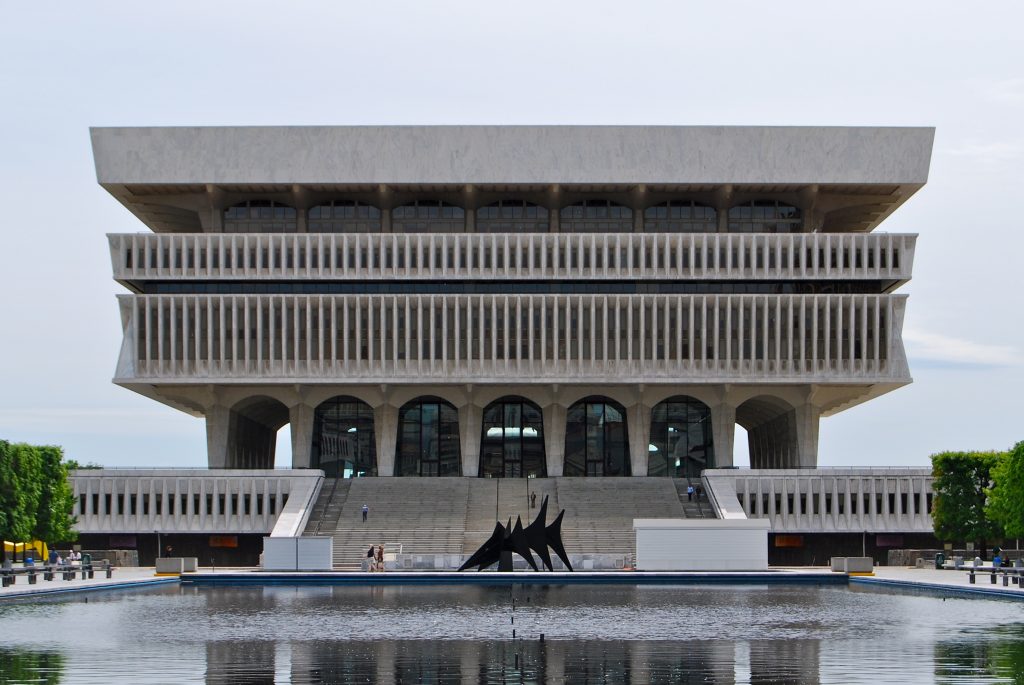
The Empire State Plaza is home to a wide collection of art, including the buildings of the plaza itself. The architecture of the plaza began construction in 1959 and is a true representation of the brutalist style in architecture. This project was mainly under the supervision of Architect Wallace Harrison from the firm Harrison and Abramovitz. The buildings are composed mainly of steel and concrete. They use a combination of strong linear facades with geometric forms, for example the Cultural Education Center, and ones of more organic shapes, for example the Egg building. Proportion and scale are a big factor in the plaza. These two factors create a feeling of being small from the viewer’s perspective. The buildings are massive and the coloration is muted and consists of greys and some browns. This also makes it feel a little cold. They are very symmetrical and strong in appearance.
The Cultural Education Center in the Empire State Plaza compares to Filippo Brunelleschi’s west facade of the Pazzi Chapel in Florence Italy from 1433. At first glance you would likely not pair these two buildings together, but after looking a little further we can see that they actually both have quite a bit in common. Both use arches and columns in a way that creates a grid. They both have have an upper section that reminds me of a gallery or clerestory, perhaps the combination of the two. Both use geometric forms throughout and concrete is used in the composition of both buildings. Both buildings have an overall squared appearance which adds to the very symmetrical and proportional plan. They also have a welcoming feel to their appearance. The stairs before the Cultural Education Center create the welcoming feel for that building. However, there are also differences between the two buildings. Of course they are in different places and are from different time periods. The styles are very different as well. The Cultural Education Center is brutalist and the Pazzi Chapel is Renaissance. The Cultural Education Center is more massive in nature due to its style of Brutalism. It is also slightly more mathematical in plan and has a very large stair platform before it. The Pazzi Chapel has more small details to it and is much smaller in size. It has some more ornate elements such as the small, circular dome on the top of its roof. Overall, this is how the two compare. Both stand for differing purposes, but still compare greatly.
